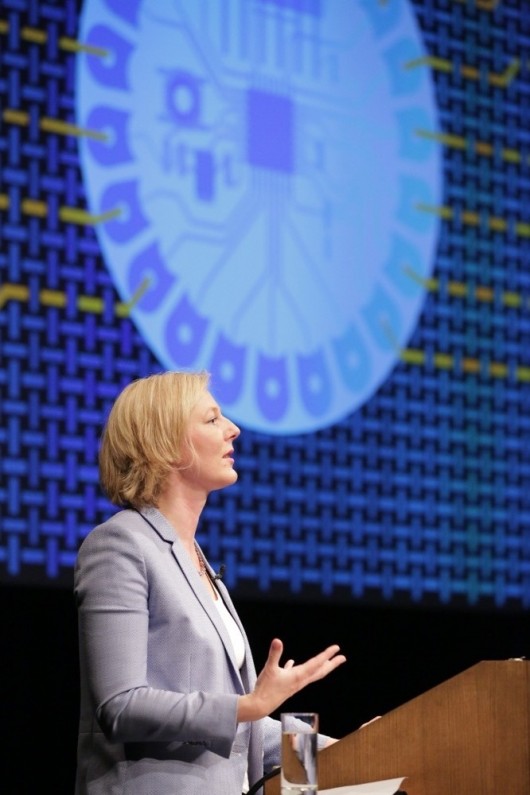
Gesche Joost at TYPO Berlin 2013 © G. Kassner
In the research lab they first of all build a prototype to see the immediate response of the user and to start the journey of the experience to then develop it further. Better than any more theoretic descriptions some of show cases, e.g. an emergency jacket that uses interactive thread reacting to a special squeeze to call for help; a smart phone that operates as ambient interaction by breathing. I am actually looking forward to the phone with the weight shifting sensor that tells you the direction on a map by translating these directional impulses into your hand.
In my eyes the most impressive project Gesche gave us an insight to was the mobile-lorm-glove. A glove that helps deafblinds to communicate writing the words into their hand that is then translated and visualised like a text message. In that way someone can understand what they say without knowing the Lorm-language themselves.
At the moment deafblind people are bound to physical contact to communicate through writing the lorm language into their palm. The glove gives them the opportunity to write text messages to friends and to even talk to more than one person at a time.

Gesche Joost is Professor for Design Research at the University of the Arts Berlin. Since 2005 she has headed the Design Research Lab at the University of the Arts Berlin. With international partners, she developed research and teaching projects in the areas of human-computerinteraction, gender and diversity aspects in technological development, as well as social sustainability and participation. Until 2010, she was junior professor for Interaction Design & Media at the Technical University of Berlin. As a visiting professor, she taught Gender and Design at the HAWK Hildesheim. In 2009, she received the Science Award of the Governing Mayor of Berlin for Young Researchers. She is the founding board member of DGTF e.V. (German Society for Design Theory and Research) and board member of the Technology Foundation Berlin.
Another interesting talk that shows us the role of design in research projects, but more importantly how this is connected to our society.
Text — Sandra — GraphicBirdWatching






















